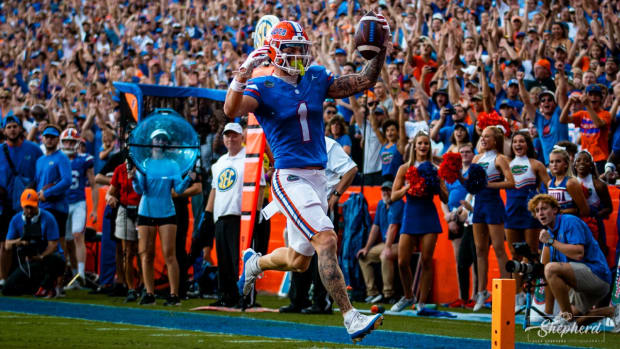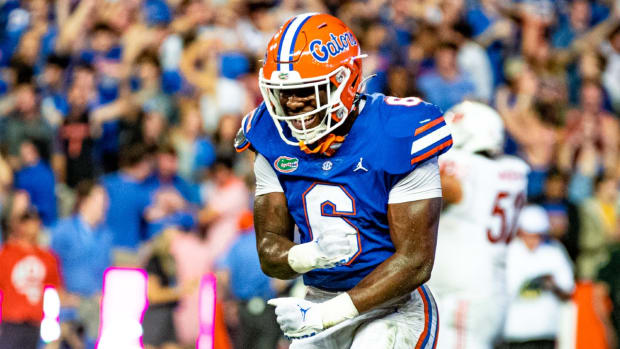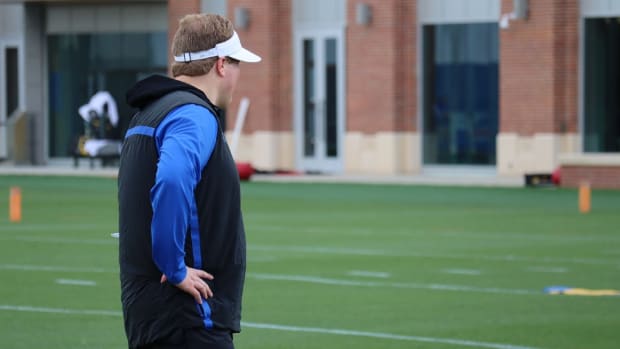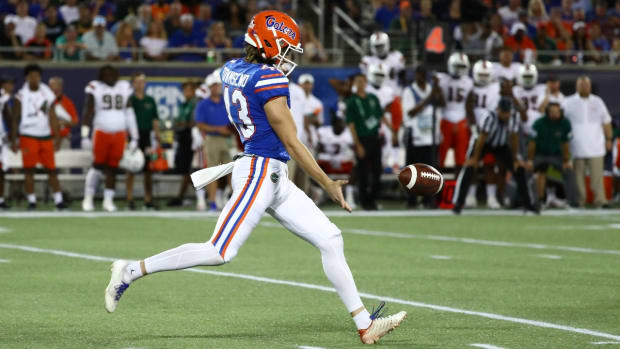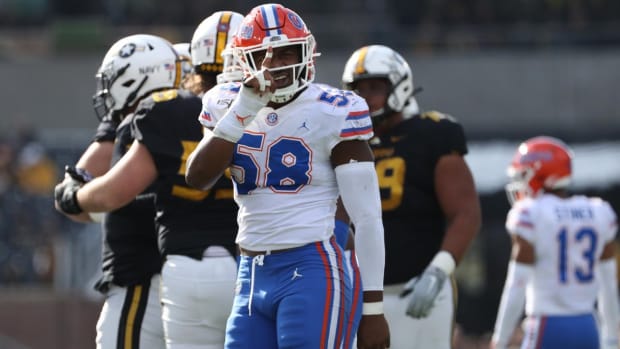Will a Non-Quarterback Win the Heisman Trophy Ever Again?
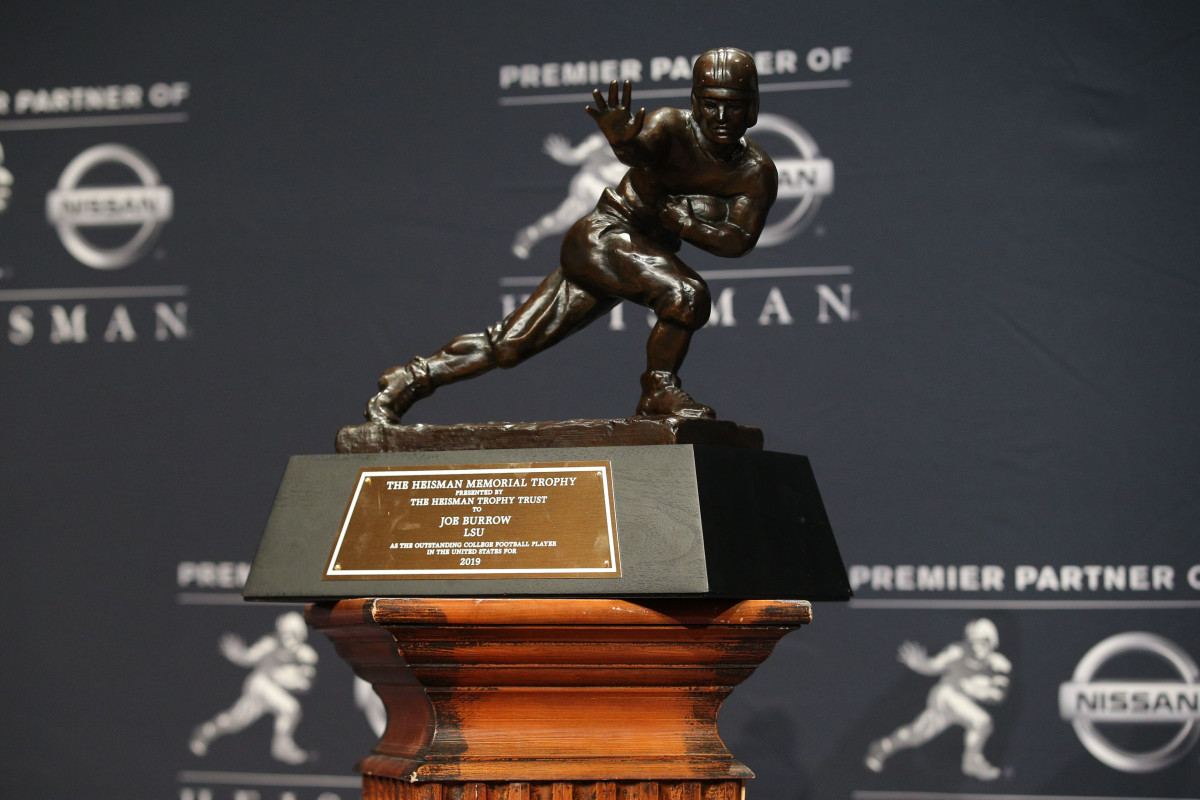
Tim Tebow, Steve Spurrier, and Danny Wuerffel.
Three names that not only reign as a few of the greatest players to ever suit up in the orange and blue for the Florida Gators but sit at the forefront of college football history as Heisman trophy winners.
Since the inception of the award in 1935, the Heisman has been awarded annually to the most outstanding player in college football in that given year.
Having 84 ceremonies that have seen 83 different winners grace the illustrious podium for their acceptance speech—with Archie Griffin being the only person in history to do so twice—the Heisman trophy is the highest individual award the NCAA has to offer.
However, throughout the years, the Heisman trophy has had little variation in the position the recipient plays.
Widely considered an award geared to be won by offensive skill position players, the trophy has only been given out to defensive players a whopping three times with the last coming when Michigan defensive back, Charles Woodson, took it home in 1997.
Despite 96% of the recipients being offensive players, the likelihood of hoisting the trophy as a wide receiver, tight end, or offensive lineman has been slim to none.
Instead, the positions that make up the vast majority of Heisman winners are running backs (41) and quarterbacks (35), combining to have won the award 90% of the time (76 out of 84).
The dominance between the two has sparked debate about whether or not the award is reserved for the best player in college football.
However, with the change in play style unfolding before us, another debate sits on the front lines.
Since the turn of the century, the Heisman Trophy has started to become a quarterbacks award to lose, with 17 out of 19 (17 out of 20 including Reggie Bush) being awarded to QBs since 2000.
With the landscape of college football changing into one that sees a multitude of different ways for quarterbacks to succeed, looks to be trophy headed in a direction that begs the question:
Will a non-quarterback win the Heisman Trophy ever again?
Following the 2015 season that saw two of the nation’s top running backs in Derrick Henry and Christian McCaffrey put together historic runs on their way to finishing 1st and 2nd for the award, college football has only seen one non-QB finish top three in the Heisman voting. (Stanford RB Bryce Love in 2017)
Given the current state of football and the increasing opportunity to make an impact that the quarterback position presents, the likelihood of seeing a non-QB win a Heisman again is bleak, especially because history tells us that running backs are the only combatant to the quarterback’s throne.
Right now, in football, innovation in the way the game is being called—especially offensively—is at an all-time high, even balanced play sheets include designed quarterback runs, playing to the hand of their signal-callers individual resumé.
The experimentation of different concepts continues to be prominent year after year, and the majority of these advancements in the way the game is played is coming via the utilization of talented quarterbacks.
Just a short time ago, winning was done by bullying your opposition, making sure to win the physical battle in the trenches and wearing them down with a premier, all-purpose back.
However, the sun has set on days of 30-plus carries for running backs and has risen for running back by committee and pass-oriented offenses. The flip from smash-mouth football to multi-dimensional firepower is being made, and there are no signs indicating going back anytime soon.
This isn’t to say that running backs cannot, or even will not, put together brilliant campaigns in the future, but the opportunity to do so is becoming less and less while the chance for quarterbacks to put up gaudy numbers are growing exponentially.
This becomes especially evident in cases like Justin Fields from Ohio State, where QBs are being asked to do take on running duties to open up passing lanes.
No matter which way you spin it, running backs are simply not put in the situation to outproduce quarterbacks in today's game. There is no lack of talent at the running back position that is pushing them behind the curve for more Heisman trophy runs, it’s just the way of the road for an ever-evolving game.

